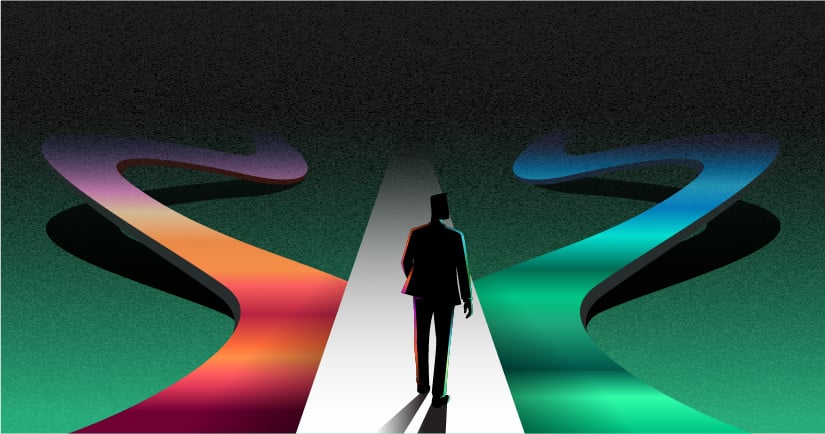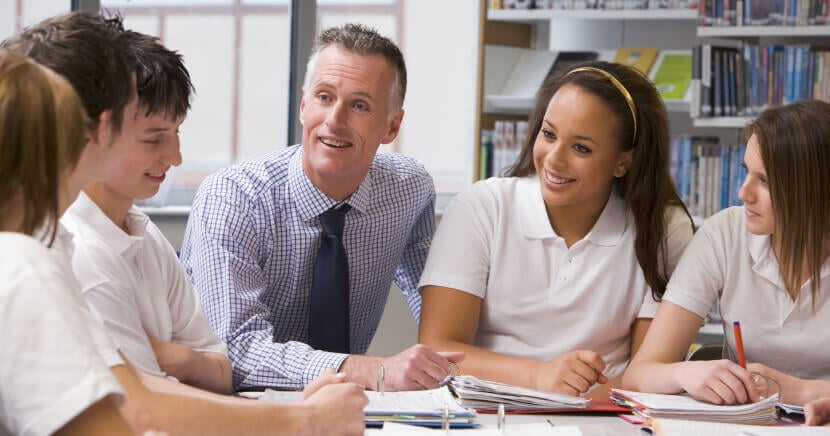The 2024 edition of Global Media and Information Literacy Week will be celebrated worldwide from October 24 to 31, with UNESCO hosting an international conference in Amman, Jordan on October 30 and 31.
Different countries around the world observe the event on different dates. In the United States, for example, the National Association for Media Literacy Education (NAMLE) hosts US Media Literacy Week October 21 through 25, which coincides with the Canadian version, presented by MediaSmarts.
To mark the occasion, PressReader will publish a three-part series of blog posts on media literacy education, with a particular focus on teaching media literacy skills to elementary- and high-school students. In this first installment, we'll look at why K-12 educators, including school librarians, should incorporate media literacy instruction into their curricula and lesson plans — and what's at stake if they don't.
See also:
-
Here’s how teachers can partner with librarians to teach media literacy at school
-
Teaching media-literacy skills should be a year-round priority for educators
-
Why media literacy is a shared responsibility to history and the future
Why is media literacy education important?
The media we consume plays a powerful role in shaping our beliefs, attitudes and perceptions. Because we gather our news from such a diverse collection of sources — social media, online reporting, television, print publications, digital news platforms such as PressReader, and more — it’s important for all of us to be empowered to decode media messages and assess their intentions and impact.
The fact is, of course, we now live in an age when an increasing percentage of our entertainment and news media comes from online sources. This is especially true for members of younger generations. This is why it's so important to teach media literacy to kids from an early age, with a particular emphasis on the Internet and social media.
Acknowledging that most young people get the vast majority of their information about the world through online sources, the European Commission (which put together a set of guidelines for educators on tackling disinformation and teaching digital literacy) notes that “The changing media and information landscape has created the need for students to better access, manage, understand, integrate, communicate, evaluate, create and disseminate information safely and responsibly using digital technologies.”
Social platforms are where info moves
A June 2024 report from the UK-based Internet Matters notes that "informed citizens who are able to make reasoned decisions and participate meaningfully in democratic processes" are at the core of any functioning democratic system:
While online spaces can facilitate this by providing a forum for the free exchange of information and ideas, the prevalence of mis- and disinformation online poses a risk to these democratic values. The need to increase the population’s resilience to this is particularly important given that children — and increasingly adults — often get their news from non-traditional news outlets. For example, around a quarter of children get their news from Tik Tok (28%), YouTube and Instagram (25%).
Lydia Bello, director of research services at Seattle University (and formerly science and engineering librarian at that institution's Lemieux Library), said, “We’ve all seen articles and research about the addictive nature of social media, about how it’s designed to engage you in order to create advertising dollars. Because of that, it’s a core place where information moves.”
According to Bello, “Misinformation and disinformation also move quickly when there’s a strong sense of emotion attached to it. Emotions like fear or anger are ones that come to mind, but also vindication, satisfaction and a really strong desire to help. When those emotions are attached or are involved, they help move the flow of misinformation on these platforms really quickly as well.”
Media literacy in the digital age

PressReader recently asked Matthew Johnson, Director of Education at Canada's MediaSmarts, how he defines media literacy.
"Digital media literacy is the ability to critically, effectively and responsibly access, use, understand and engage with media of all kinds," Johnson told us. "It's about asking questions about the media we use and consume, being ethical users and consumers and being engaged in using media tools to make a difference."
In other words, media literacy is about more than just being able to tell fact from fiction (although that is certainly a big part of it). In the 21st century, it's also about online safety and being a good digital citizen.
As the Internet Matters report we cited above tells us:
Media literacy also means being able to contribute safely and respectfully to online environments, by making informed choices when creating and sharing information.
Media literacy education should help children to understand their own role in creating positive online spaces and how to be a responsible digital citizen. This includes considering the consequences of their own outputs and interactions on the safety and well-being of other users.
The risks of a polluted information supply
A study from Stanford University underscores the need to introduce news literacy and critical thinking at early grade levels. The researchers gave 3,446 high-school-aged Americans a series of exercises to gauge their ability to evaluate information found through digital sources on the open internet. According to the study’s executive summary, “The results — if they can be summarized in a word — are troubling.”
The Stanford team found that 96% of the students failed to question the credibility of an online source, while two-thirds could not distinguish between news articles and ads.
“Reliable information is to civic health what proper sanitation and potable water are to public health,” the researchers wrote. “A polluted information supply imperils our nation’s civic health.” The study called for “high-quality digital literacy curricula, validated by rigorous research,” to safeguard democracy against the dangerous consequences of misinformation.
“Education moves slowly,” the executive summary reads. “Technology doesn’t. If we don’t act with urgency, our students’ ability to engage in civic life will be the casualty.”
Get an early start with news and media literacy

PressReader asked Chris Sperry, Director of Curriculum and Staff Development at Project Look Sharp — the not-for-profit media literacy initiative at Ithaca College — about the right time for kids to start learning to practice media literacy skills.
"The younger the better," Sperry told us. "Like any life-long literacy habit, it is best to start young. For instance, we can teach kindergartners to understand that there may not be fruit in Fruit Loops even though it looks like it. Why might that be? How can we find out if there is fruit in it?"
Sperry added that learning to think critically about information need not be confined to dedicated media-literacy classes.
"At middle school we want students studying the US Civil War to reflexively ask questions about historical context and perspective as they look at primary documents from the time period," he said. "In high school science classes we want students to reflect on how their own identities impact what they see as true and not true.
"There are thousands of other examples throughout the curriculum where we should integrate critical thinking about the mediated messages that fill our world," Sperry continued. "And that is just the analysis and evaluation component of media literacy."
This squares with what Internet Matters tells us:
There are various subjects in the school curriculum that have aspects of media literacy to offer. For example, critical thinking skills are developed through English and History, while both functional and safety skills are taught through Computing.
Who are the ideal media literacy educators?
Sperry says K-12 educators, school librarians in particularly, are ideally positioned to introduce the next generation of media consumers to spot fake news, use social media platforms safely, and other essential skills for navigating today's digital landscape.
"School librarians are information literacy specialists," he told PressReader. "They are trained in inquiry-based learning and are experts in collaboration. They have a view of the entire curriculum and work with teachers and students across all levels and subjects. And school librarians have the passion for truth seeking that is essential in leading this work."
Johnson agrees. He told us, "School libraries are an essential part of supporting students and teachers in developing digital media literacy and critical thinking. Because these skills are relevant across the curriculum, school librarians can act as vital resources for students to learn how to read media critically and engage with it ethically and professional development for teachers as well."
How can K-12 educators best begin to teach students the basics of media literacy? What resources are available to help them get started? We'll explore these and other questions in the second installment of this three-part series of blog posts.









